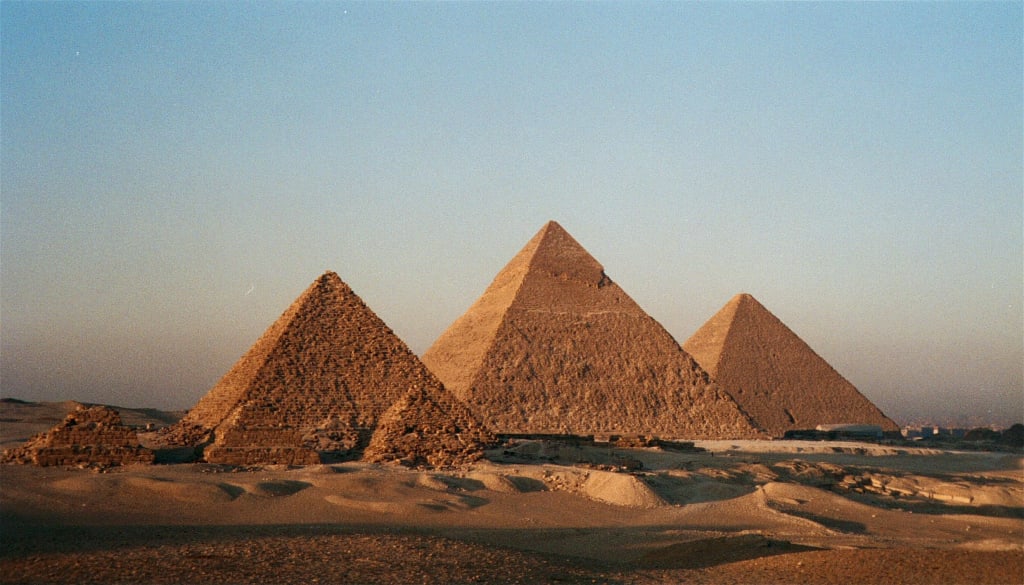The Egyptian Pyramids' Secret Is Probably Discovered
Discoveries of Ancient Egyptian Mysteries

The Egyptian Pyramids' Secret Is Probably Discovered
It's quite hot. You just arrived in Egypt a few hours ago, but you're already in the middle of Sakara, in front of Egypt's oldest pyramid. You remember that you forgot to apply sunscreen, but you don't even have time to consider it because you were called to report on recent discoveries of ancient Egyptian mysteries; we're talking about things that are being unearthed after 4,000 years.
Do you realize how significant that is at the location For someone who has only ever watched the movie The Mummy, you can't believe you're about to experience one in real life as archaeologists are buzzing with excitement over what they believe to be one of Egypt's oldest full mummies.
This beautiful and well-preserved mummy of a wealthy man named Hakashapis was discovered in a deep shaft covered in layers of gold leaves. There are many symbols that show he was an important and wealthy man, such as the band he wore on his head the bracelet on his chest, and the fact that he was buried in a deep shaft. The past year has been a good year for Egyptology with many new discoveries being made about life in ancient Egypt.
There are many symbols that indicate hakashapis was a significant and wealthy man, including the band he wore on his head the bracelet on his chest, and the fact that he was embalmed with a tunic. He was discovered in a deep shaft covered in layers of gold leaves.
The most exciting part of the entire Discovery was discovering the final resting place sealed with mortar just as the ancient Egyptians did 4,300 years ago; if you stop to admire the Pyramid of Jose at Sakara, this six-tiered, four-sided structure is the oldest stone building in Egypt; it was also in Sakara that archaeologists discovered the earliest records of Egyptian writing; they are called The Pyramid text cool name.
These texts were hieroglyphic writings carved on the walls of pyramids in Egypt's Old Kingdom between 2575 BCE and 2130 BCE. Oh, and what's that? Your archaeologist friends are engaged in a heated discussion about a recent groundbreaking find: the discovery of the first pregnant mummy. Even though we are familiar with the processes involved in mummification, we continue to make discoveries that shed light on the lives of the ancient Egyptians.
Speaking of mummies, how about we do a quick true or false round to see if you can spot a few myths about them ready would you say that mummification recipes vary across Egypt? Your friends are so excited about this latest mummy finding because it will likely help archaeologists understand more about Maternity in ancient Egypt because there is so little known about that. And speaking of mummies how about we do a quick true or false round to see if you can spot a few myths about whether it is 100 True, yes, or no?
It almost seems as though some ancient Egyptians forgot what their forefathers used to do and tried to figure it out all over again when archaeologists discovered that mummification procedures varied between towns and also between time periods. It's also true that residents of some wealthier cities, like modern-day Thieves, had access to the newest mummification ingredients, but in remote areas without access to trade networks, these ingredients weren't available, so they had to make do with what they had. Here's another fun fact about mummification: Did you know that Egyptians recycled coffins?
If you think we invented upcycling, think again. We also owe that to our friends the ancient Egyptians, who used wood for coffins was pricey and limited.
According to reports, a quality coffin may cost up to five goats or 250 loaves of bread. To save time and money, several embalmers broke into pyramids and stole coffins that were already in use. Hopefully, none of these coffins had curses on them.
You're prepared to explore the Great Pyramids of Giza in Cairo. Since researchers found a long-kept secret inside Khufu's pyramid, the field of Egyptology has been rocked.
or should I say a very well-hidden tunnel? Why is this one of the most significant discoveries of the twenty-first century? Because it may have answered the question of how the ancient Egyptians constructed the famous pyramids of Giza in the first place. Until now, there has been little evidence of how Egyptians were able to move such absurdly heavy limestones up and around. Some have suggested they may have used rams, while others have suggested they may have used extraterrestrial assistance.
Herodotus, a Greek scholar who lived in 450 BCE, makes the earliest hypothesis as to how the Egyptians may have built the pyramids. He argues that the Pyramids of Giza were probably first erected as a stepped pyramid.
structure, and only then were their edges rounded, but modern Egyptologists don't believe Herodotus' story to be accurate; they have alternate hypotheses. The internal ramp and enormous void theory have been one of these hypotheses for years.
Before recently, when the Scan the Pyramids project used infrared technology to investigate the big void, no one knew for sure what it was. If this theory is accurate, then this is what could have happened. Architects have spoken about this big void at the center of the Khufu pyramid, but no one knew for sure what it was. On the south side of the pyramid, Egyptians might have combined an inside spiral ramp with an external side ramp.
Wow, this trip is getting better by the minute, but there are still some mysteries to be revealed tell me one thing, would you believe me if I told you that ancient Egyptians invented robots? Well, that's not entirely true, sure they were astronomers, mathematicians, and engineers, but they also used these ramps as a type of scaffolding to help them drag heavy blocks of stones around. This wooden statue had been in the Metropolitan Museum of Art for years before an X-ray machine allowed someone to discover its Secret.
When the mechanism spins, the statue rises and lowers her hand. Experts uncovered a mechanical operating system inside it. A pulley-like axis runs from the statue's shoulder to her left leg. Last on your list is the Sphinx, but I'm not talking about the Great Sphinx of Giza; I'm talking about a lot smaller and happier Sphinx. Keep in mind that this was constructed over 3000 years ago, yet it seems like a creation from the 19th century CE.
It's just mind-boggling. Behold The Smiling Sphinx is a lighthearted statue that has two dimples and a small smile that was discovered during the Dendera Temple excavations, whereas the Great Sphinx is thought to have been constructed around 4500 years ago, this little one is considered to be much more modern. In traditional ancient Egyptian culture, sphinxes were built to symbolize royalty and power. Archaeologists have even discovered a sphinx during the excavations of the Dendera Temple.
Experts aren't 100% certain, but they think that this statue has a striking resemblance to the face of Roman Emperor Claudius. Throughout its more than three thousand years of existence, ancient Egyptian society was ruled by the Roman Empire for more than 600 years, which occurred from 30 BCE to about 642 CE. Despite this, it's rumored that the Great Sphinx is a representation of Pharaoh Kafra.
About the Creator
Enjoyed the story? Support the Creator.
Subscribe for free to receive all their stories in your feed. You could also pledge your support or give them a one-off tip, letting them know you appreciate their work.






Comments
There are no comments for this story
Be the first to respond and start the conversation.